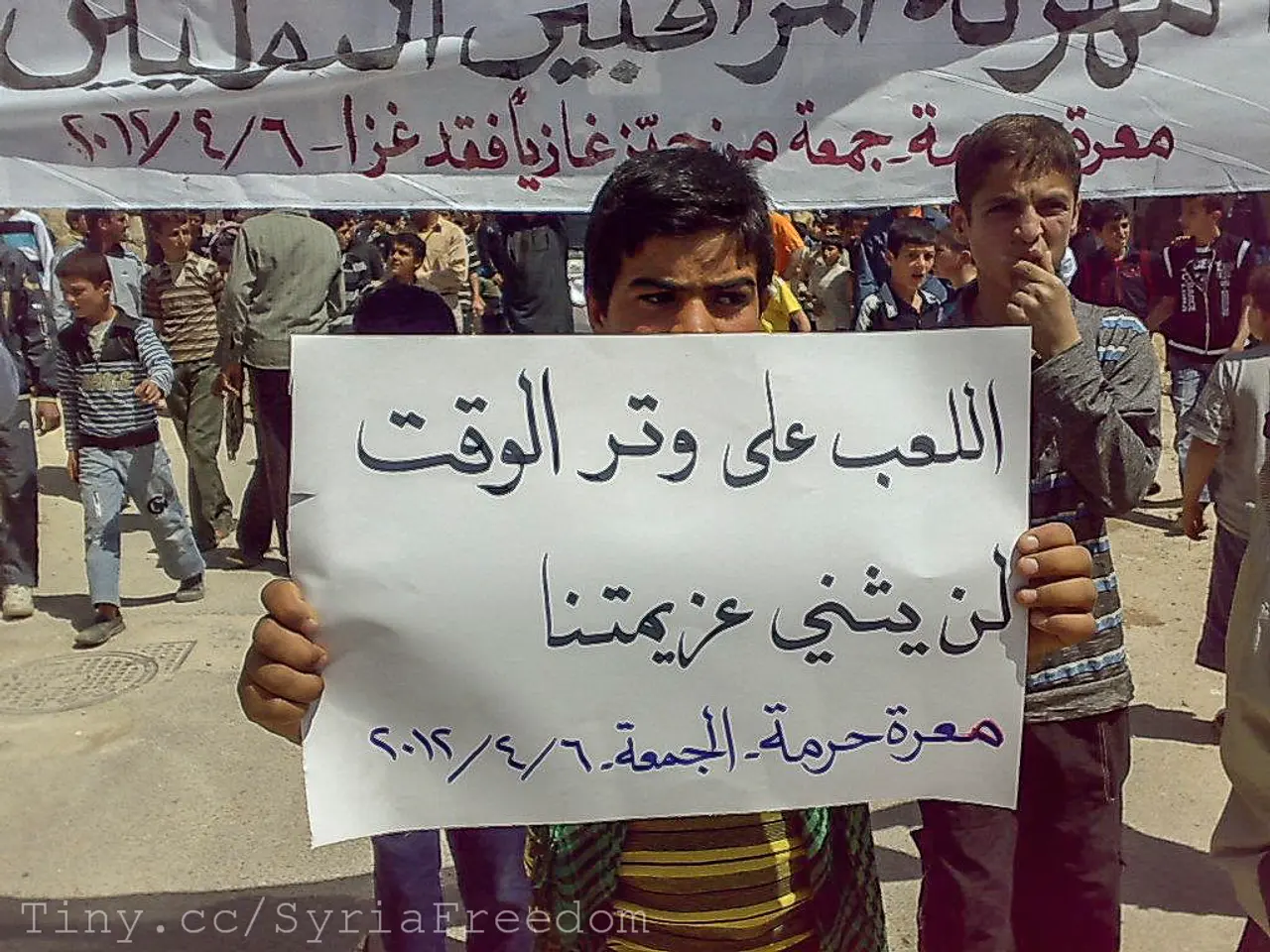Tragedy at Gaza aid center following the introduction of a new system, resulting in fatalities
In the wake of a tragic crush at an aid distribution site in Gaza that claimed the lives of 21 people, criticism of the Gaza Humanitarian Foundation (GHF) has reached a fever pitch. The incident, which occurred on Wednesday morning at Secure Distribution Site 3 (SDS3), has highlighted a series of interconnected issues with GHF's protocols and systems.
The aid distribution sites operated by GHF are often located in areas closely monitored by the Israeli Defense Forces (IDF), increasing the risk for Palestinians who must travel long distances to access food aid. Reports indicate that many have been injured or even killed en route or at distribution points, overwhelming nearby medical facilities ill-equipped for trauma cases.
Critics argue that GHF's aid system allows Israeli authorities to use food distribution as a strategic lever, determining who receives assistance and who does not. This practice, known as "aid weaponization," has exacerbated humanitarian suffering and left many in critical need unmet.
The GHF has largely operated independently, ignoring or alienating other aid organizations and international actors who emphasize neutrality, coordination, and adherence to humanitarian principles. This has drawn criticism for fostering operational inefficiencies and failing to safely and adequately address Gaza's immense humanitarian needs.
Since GHF's launch, medical clinics have reported hundreds of trauma cases resulting directly from violence at GHF distribution sites. Many injured Palestinians have died before receiving proper medical treatment, highlighting grave flaws in GHF’s planning and safety protocols.
The US-backed organization's efforts are entangled with controversial geopolitics, with accusations rising that it is complicit in or enabling Israeli tactics that some international observers characterize as war crimes or genocide through the deliberate deprivation of essential supplies. This has fueled a broader outcry from humanitarian groups and segments of the international community against GHF's approach.
Following the recent crush, the GHF implemented a new system using red and green flags to indicate whether the aid centre is open, replacing social media posts. However, eyewitnesses suggest that the crush was the result of systemic failures of communication and crowd control by GHF. One Palestinian asked our website for information about the opening time of the aid site before it opens, stating that they are going through famine and have been without food for three days.
The Hamas-run Government Media Office has denied the allegations made by the GHF, stating that GHF is seeking to evade responsibility for the massacre at the aid sites. Deaths across the Gaza Strip increase significantly on days when more GHF sites are open, according to an analysis by our website. To date, a total of 674 people have been killed while trying to collect food from GHF sites, according to the UN (excluding the latest casualties from Wednesday's incident).
The increased criticism of GHF's protocols and system following the recent crush at an aid distribution site in Gaza stems from several interconnected issues: unsafe site locations and long travel requirements, failure to adequately coordinate with existing humanitarian systems, and systemic failures of communication and crowd control. This has resulted in preventable injuries and deaths, casting doubt on the foundation’s efficacy and ethics in Gaza’s highly volatile environment.
- The current debate surrounding the Gaza Humanitarian Foundation (GHF) includes concerns about the use of food aid as a strategic lever, a practice known as "aid weaponization," which has exacerbated medical-conditions and health-and-wellness issues in Gaza, leaving many in critical need unattended.
- In addition to criticism over aid weaponization, the GHF has faced scrutiny for its independent operations and refusal to coordinate with other aid organizations and international actors, which experts argue has fostered operational inefficiencies and safety concerns.
- As a result of these interconnected issues, the war in Gaza has been inextricably linked to general-news reports detailing preventable injuries, deaths, and overburdened medical facilities, as well as to crime-and-justice concerns, such as allegations of aid distribution sites being used to facilitate violence and violation of humanitarian principles.




